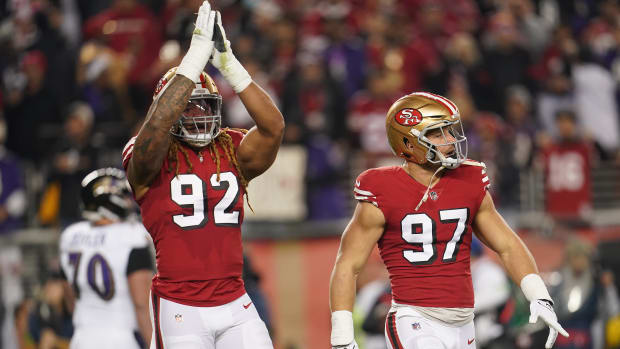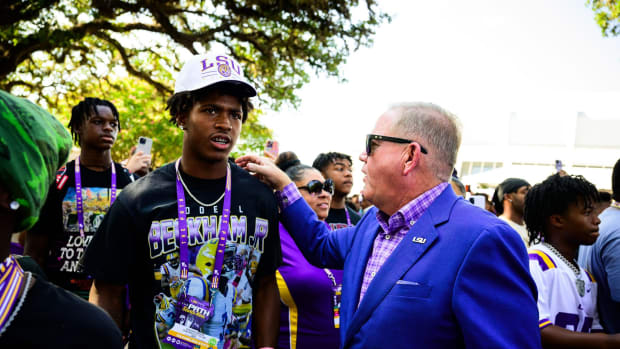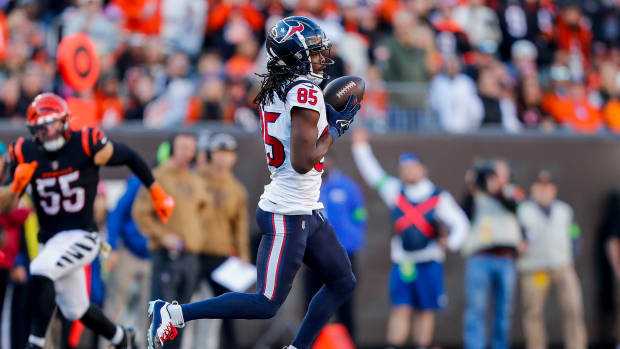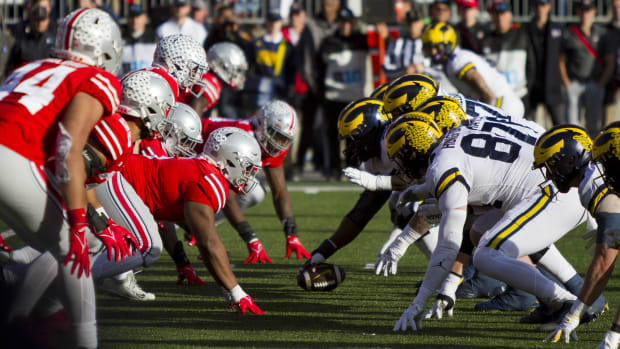Ohio State Coach Ryan Day Has Deep Roots With His Offense
Ohio State's Friday night kickoff at Northwestern has a bit of a Halloween feel, which is fitting given that the monster likely to devour the Wildcats was birthed in their laboratory.
Almost two decades ago, when Ryan Day was a sophomore quarterback at the University of New Hampshire, then-little-known-assistant coach Chip Kelly, brought back to campus a revolutionary new offensive idea someone had been crazy enough to try in the Big Ten.
That school was Northwestern, which in then-coach Randy Walker's second season had shocked the league by tying for first place thanks to an offense that spread defenses out to gain greater space to operate.
Walker, a fullback at Miami of Ohio, was willing to incorporate the concepts at Northwestern because his old-school tendencies told him he had to run the football to win in the Big Ten, but he knew his roster lacked the size and depth to pound away at opponents.
He knew that because he'd tried it in his first year in Evanston and went 3-9 in 1999.
Hence his willingness to adapt and to give offensive coordinator Kevin Wilson the freedom to dial up coaches around the country, researching this new gimmicky-looking attack that, at its foundation, were run concepts as old as Woody Hayes' Three Yards and a Cloud of Dust philosophy.
OSU features one of nation's most successful offenses
Now the Buckeyes are far from that, featuring dual-threat quarterback Justin Fields directing an attack that scores touchdowns on 80 percent of its Red Zone possessions, averages 49 points, 289 yards rushing and 535 yards per-game.
But what you see from OSU now is a product with 20 years of polish that Day and Wilson had a nostalgic conversation about when they first met in Columbus.
"When I first got here (in 2017), I didn't know Kevin," Day said. "I shared with him that story of my sophomore year, spring break, when Chip came back with a bunch of film of (Northwestern quarterback) Zak Kustok and all those guys and Northwestern running the Spread offense.
"From the Shotgun, you actually read the defensive end and then, based on what he did, you could either pitch the ball or throw the ball. That was real new. Nobody really knew what was going on."
The connection between what Day is doing now with the Buckeyes and what sprouted under Walker at Northwestern is much stronger than just the evolution of something two decades old.
Meyer took note and borrowed ideas
Besides Chip Kelly, another young coach watching what Walker and Wilson accomplished at Northwestern was Urban Meyer, who took it to Bowling Green when he took over there in 2001.
Meyer, of course, carried it from there to Utah, then to Florida, where he won the first of his three national championships at Ohio State's expense in the 2007 BCS title game.
The third of those rings came in his third year with the Buckeyes in 2014.
Offensive coordinator Tom Herman's departure after that for the head coaching job at Houston set in motion a three-year cycle of offensive ups and downs for the Buckeyes that led Meyer to bring Day aboard from the San Francisco 49ers.
In Day's first two years running things, OSU threw 90 touchdown passes -- more than anyone in the country. But Day makes no bones about the Buckeyes' philosophy being first and foremost that of a physical running team.
Just because it's the Spread doesn't mean it's soft
"We feel strongly about that," Day said. "We believe, even though you are spread out, if you ask (offensive linemen) Josh Myers, Wyatt Davis, Jonah Jackson and those guys, they would take offense at that notion (OSU is no longer physical in the run game). They are some of the toughest guys I've been around.
"We are a power run team. We might not be running iso with a fullback on a (middle) linebacker, but we have two tight ends. We have power run schemes. We have gap schemes. We have zone schemes.
"The one thing the Spread gives us, it just gives us more room. Guys have to account for the quarterback (running) in the Spread."
Fields has eight rushing touchdowns -- at least one in every game -- and averages 5 yards per-carry and 47 rushing yards per-game.
Day wasn't quite that successful as a guinea pig quarterback at New Hampshire when the Spread still had some imperfections.
"Some of those ideas worked, but some of them didn't," he said, laughing. "I have some of the scars to show from that. That's all right. I've moved on. It was cool to be in the laboratory phase of all that."




